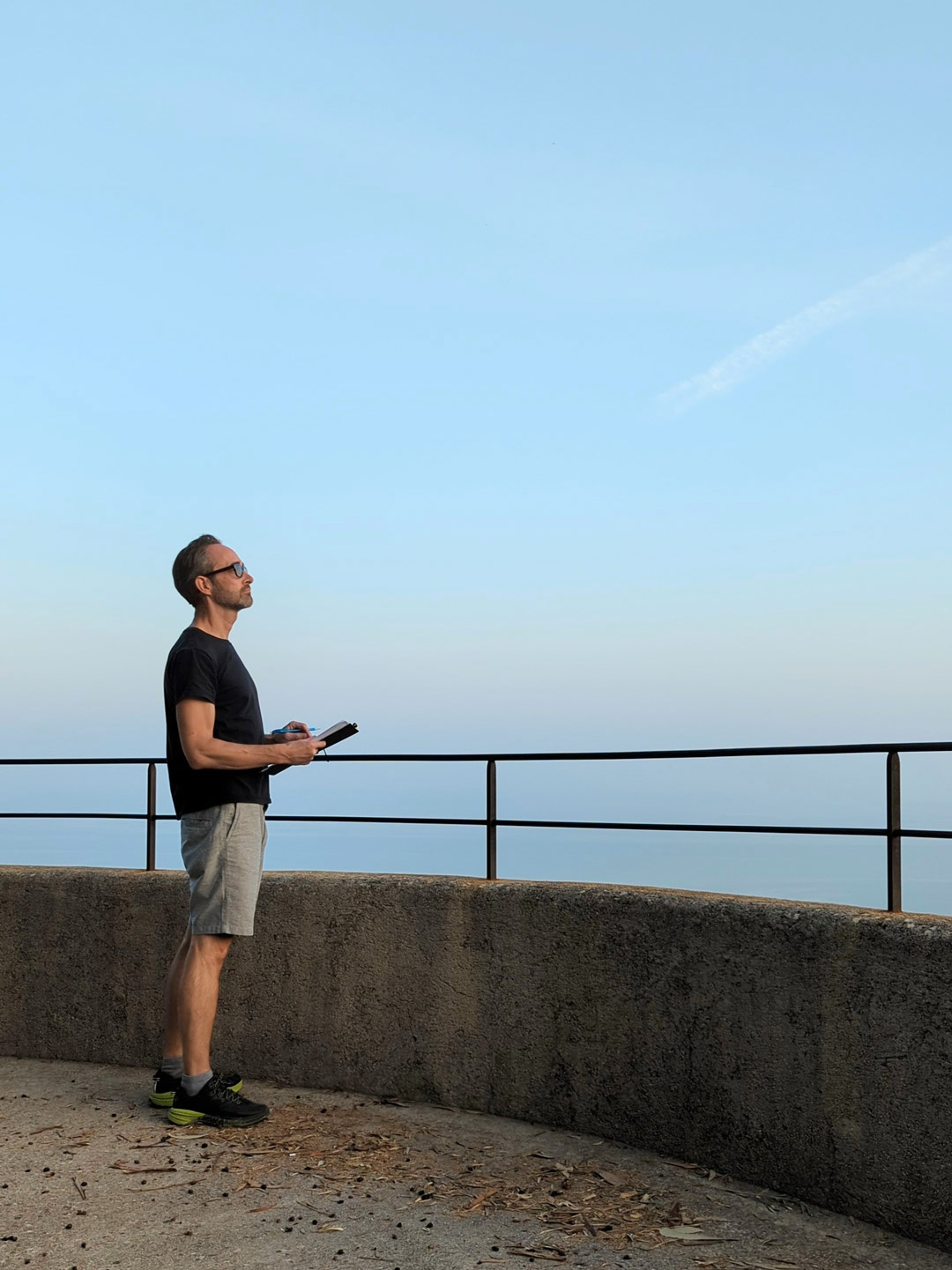
Air Tasting is a practice exploring the experience of the air, initiated during a collaboration between myself and Janine MacLeod in 2002. It takes the form of written sensory analysis, instructional workshops, guided walking tours, distillation of aromatic materials, and the staging of atmospheric effects. By presenting the atmospheric experience as a form of participatory embodied knowledge this work seeks to bring to people a direct awareness of the air as our shared habitat.
Since 2008 I’ve been leading air tasting walking tours and workshops where I introduce people to the air tasting method and we explore the aromas and atmospheric phenomena of particular places. This exercise of directed visual, haptic and olfactory perception employs a combination of observation, writing and discussion to engage people in an embodied participatory knowing of the air as a speculative object.
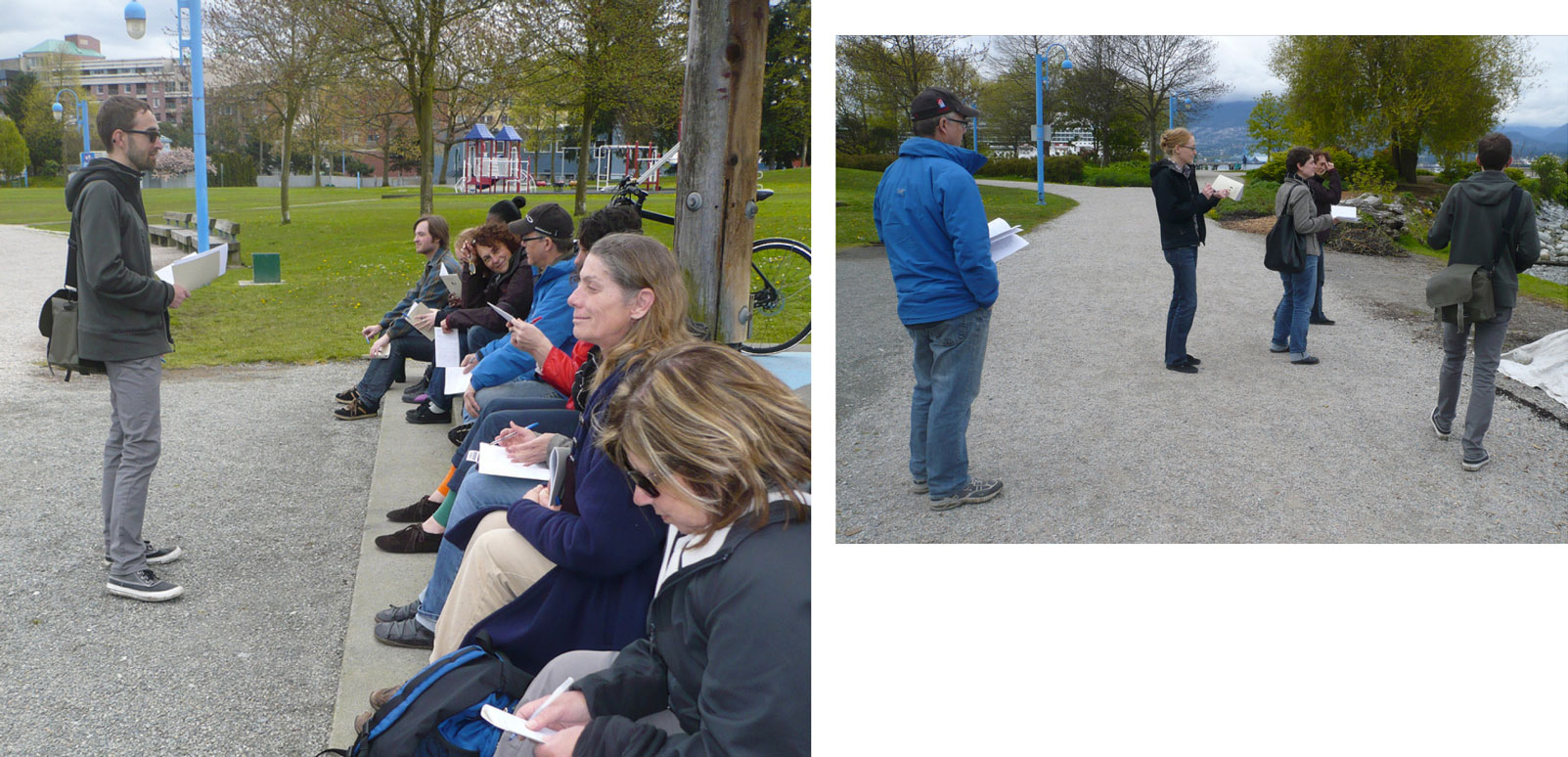
Air Tasting provides an opportunity to explore how we use our senses, starting from the very basic activity of simply observing one’s sensation of the air. (For more info about the Air Tasting method see What is Tasting?)
During the summer of 2020 I began conducting a series of air reports from my balcony in the West End of Vancouver Canada, on unceded Musqueam, Squamish, and Tsleil-Waututh territories. Each report is a brief written sensory analysis of the visual, haptic and olfactory qualities of the air as I experience it at that moment. Constituting a kind of research-as-performance, these reports (115 in total as of July 2022) are published in real time on social media at twitter.com/airtasting and archived on airtasting.com.
This project formalizes the exploratory style of the air tasting notes I’ve been producing since 2004, applying a more consistent method.
5 July 2022, 14:30–14:44,
Balcony, West End, Vancouver, Canada.The blue sky is broken into an active layered scape of massive cumulus clouds, swathes of foggy altostratus, mottled patches of high cirrocumulus, and long feather streaks of cirrus clouds.
This tepid mid-afternoon air has a smooth, almost velvety, texture. Erratic breezy easterly gusts occasionally make a sharp reversal against their prevailing current.
Cool sea aromas are prominent: salty humidity, a slaty minerality, and the shellfish brine of a wet reef drying in sunshine, contrasting against a subtle background accord of moist warm earth and potting soil. Intermittent wafts of rose florals from the east.
This World of Air is a public art project commissioned by the City of Vancouver. During June 2022 a series of 1200 × 1734 mm displays showing sensory air reports of Vancouver’s atmospheric conditions were installed in 20 outdoor locations across the city. Throughout the month I conducted live daily air reports and posted them on social media.
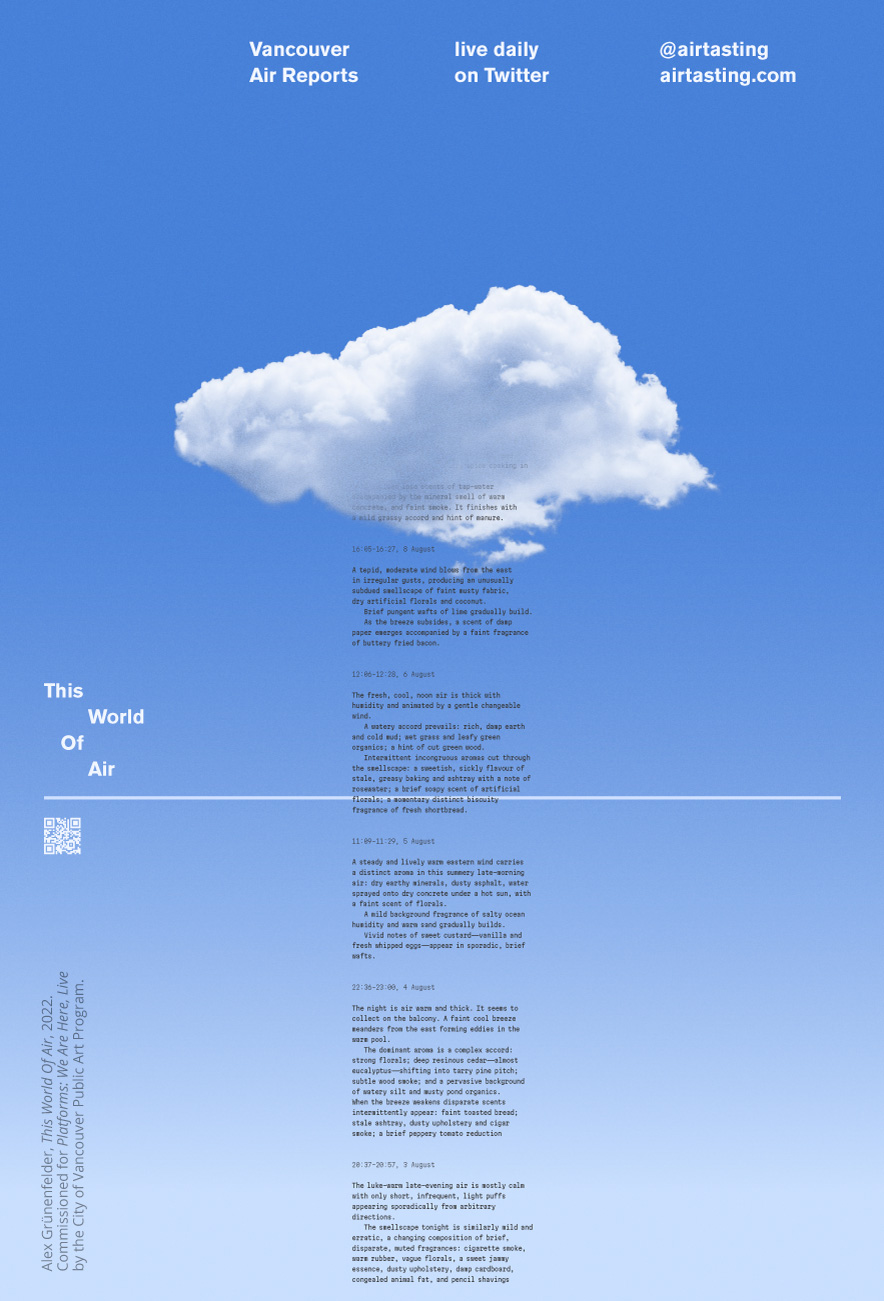
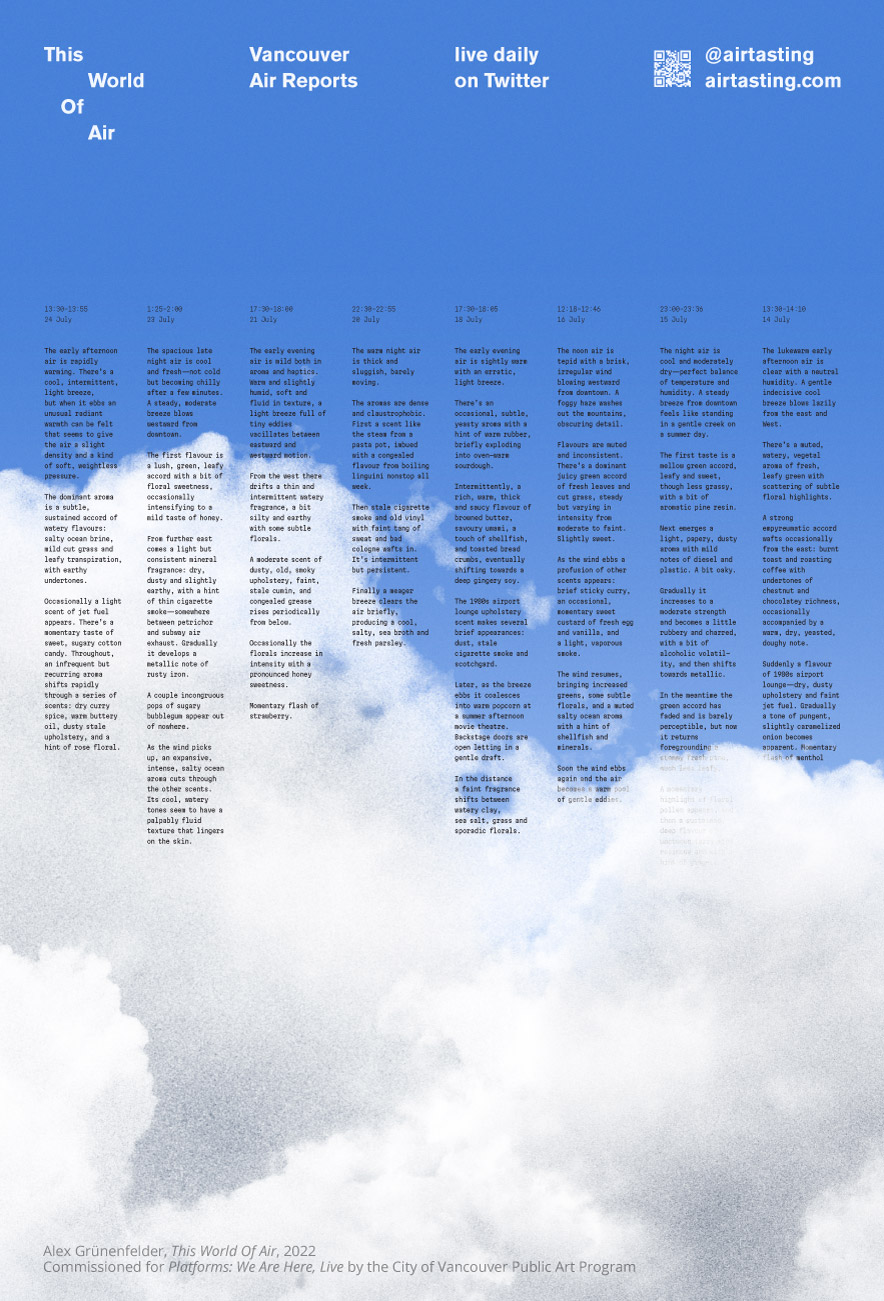
The Kurhaus Alpenblick Air Tasting Menu is a menu of daily air degustations from 30 August to 2 September 2022, as experienced on the terrace of the former air cure spa Kurhaus Alpenblick in Tenna Switzerland. The Menu is available to guests at the Alpenblick’s present-day restaurant.


Built in 1902 in Tenna Switzerland, the Kurhaus Alpenblick operated as a climatic health resort and air therapy facility until the Second World War. During a 2022 visit, I assumed the role of an air cure climate convalescent. Documenting my sensory experience of the air on the hotel terrace, I produced a daily atmospheric carte du jour. Framed within the diegetic context of a passage quoted from the Alpenblick’s 1911 promotional publication, the resulting Kurhaus Alpenblick Air Tasting Menu presents a multi-sensory account of atmospheric phenomena integrated through the structure of oenologist Emile Peynaud’s tasting method and the narrative form of a dining menu. Distributed in the Alpenblick’s restaurant, the Menu introduces guests to the local alpine air as a source of nourishment worthy of the same attention that they might dedicate to the fare served from the hotel kitchen.
For more info about “tasting” see What is Tasting?
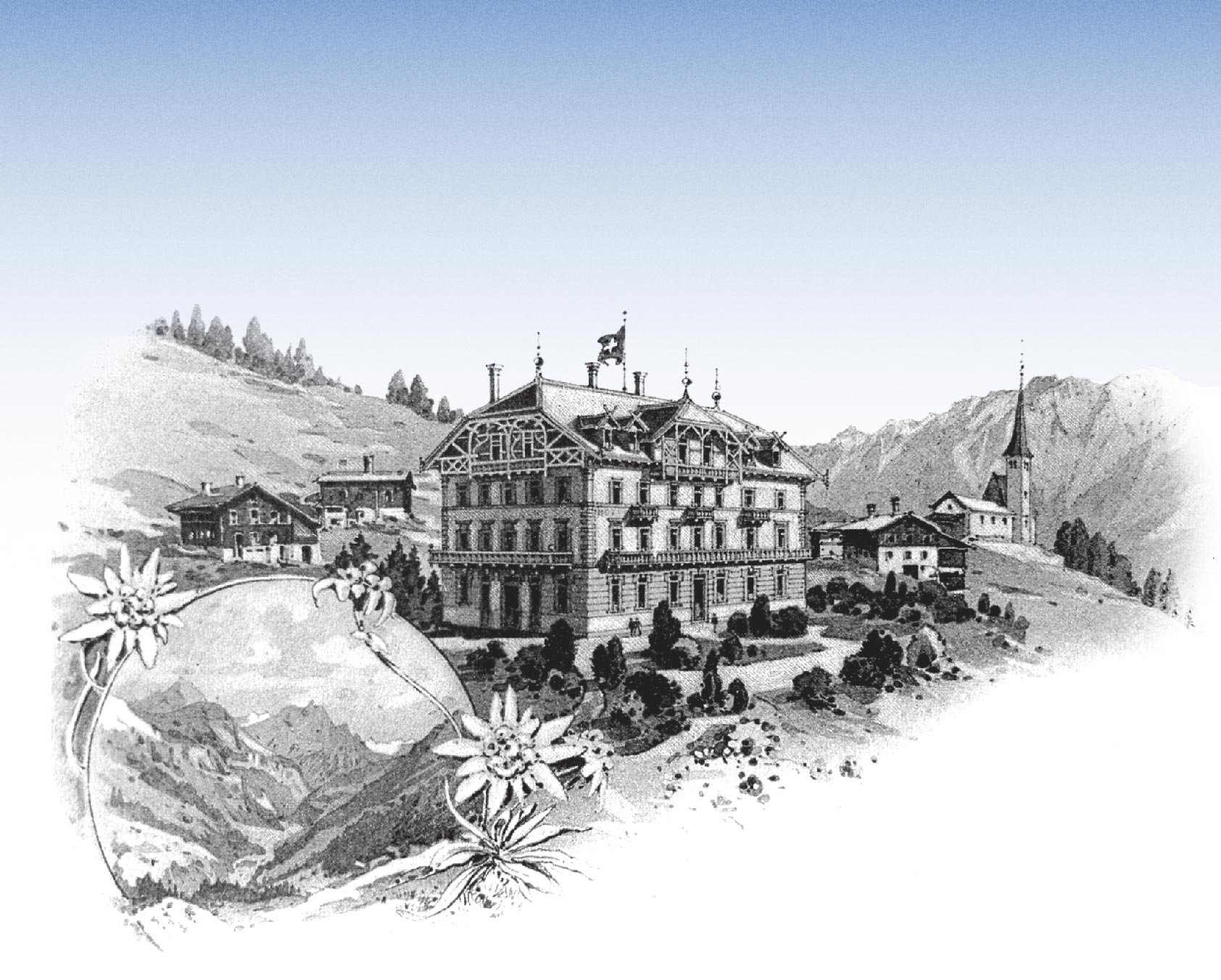
Climatic therapy and the air cure
The idea that climatic conditions can induce healing effects was commonplace since classical antiquity, and Luftbäder (air bathing) was widely practiced as a means to strengthen the body’s immunity against illness, a treatment that found renewed popularity during the Enlightenment.1 In the mid-1800s German and Swiss doctors formalilzed the Luftkur (air cure), or more specifically the Freiluft-Liegekur (open-air reclining rest cure), as the cornerstone of the health regime in Switzerland’s emerging high altitude climatic therapy facilities and alpine sanatoria, where patients would recline outdoors in all weather for 6–8 hours per day. The air cure was the center of a broader regimen modeled on the lifestyle of local mountain residents, featuring intense sunlight exposure, periods of vigourous outdoor activity, and an extensive diet of locally sourced food (often upwards of five meals per day) including substantial quantities of raw milk.
This practice of climate immersion stands in sharp contrast to the pursuit of climate control and air conditioning that came to dominate the late 1900s. My ongoing research proposes that the late-1800s alpine air cure sanatorium functions as a utopian eco-human-hybrid technology; through its regimen of landscape and climate immersion, it elicits curative effects by establishing a therapeutic relationship between the convalescent and the landscape.
1 B. Rüttimann. “Volkssanatorien in der Schweiz.” Schweizerische Ärztezeitung, 81: Nr 49, 2000.

If the air cure is the cornerstone of the alpine climatic therapy treatment, then the Davoser Liegestuhl (Davos recliner) is the cornerstone of sanatorium architecture. This chair was designed so that climatic therapy convalescents can recline in the open air for extended periods of time. Serving as the principle platform for the air cure treatment, it maintains the proper orientation of the body and guides the awareness towards an open vista of air and sunlight. The sanatorium architecture functions as an extension of this seating, built to afford the reclining convalescent maximum exposure to air and light, typically via a facade of stacked balconies situated on a mountain’s southern face and overlooking the valley.
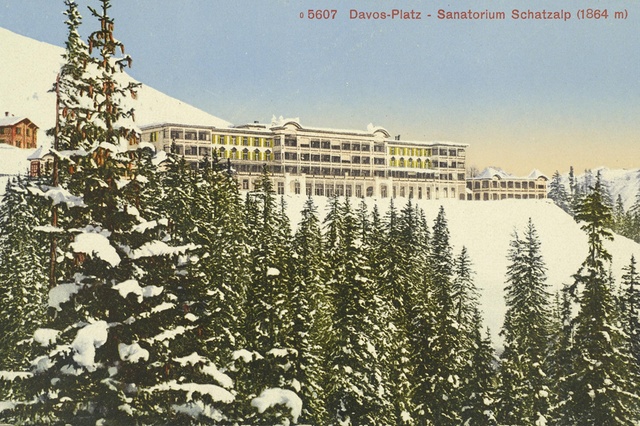
According to astronomer Harlow Shapely, the atoms you are now exhaling will spread across the country within a week, and within one year they will have traveled around the entire earth. In this sense our intimate bodily engagement with the air bridges all terrestrial distance.
Illustrating Shapley’s analysis of the atmosphere as a globally interconnected corporeal body, this Cloud Performance creates a vapour cloud in order to make visible the movement and interaction between air, weather, and landscape.
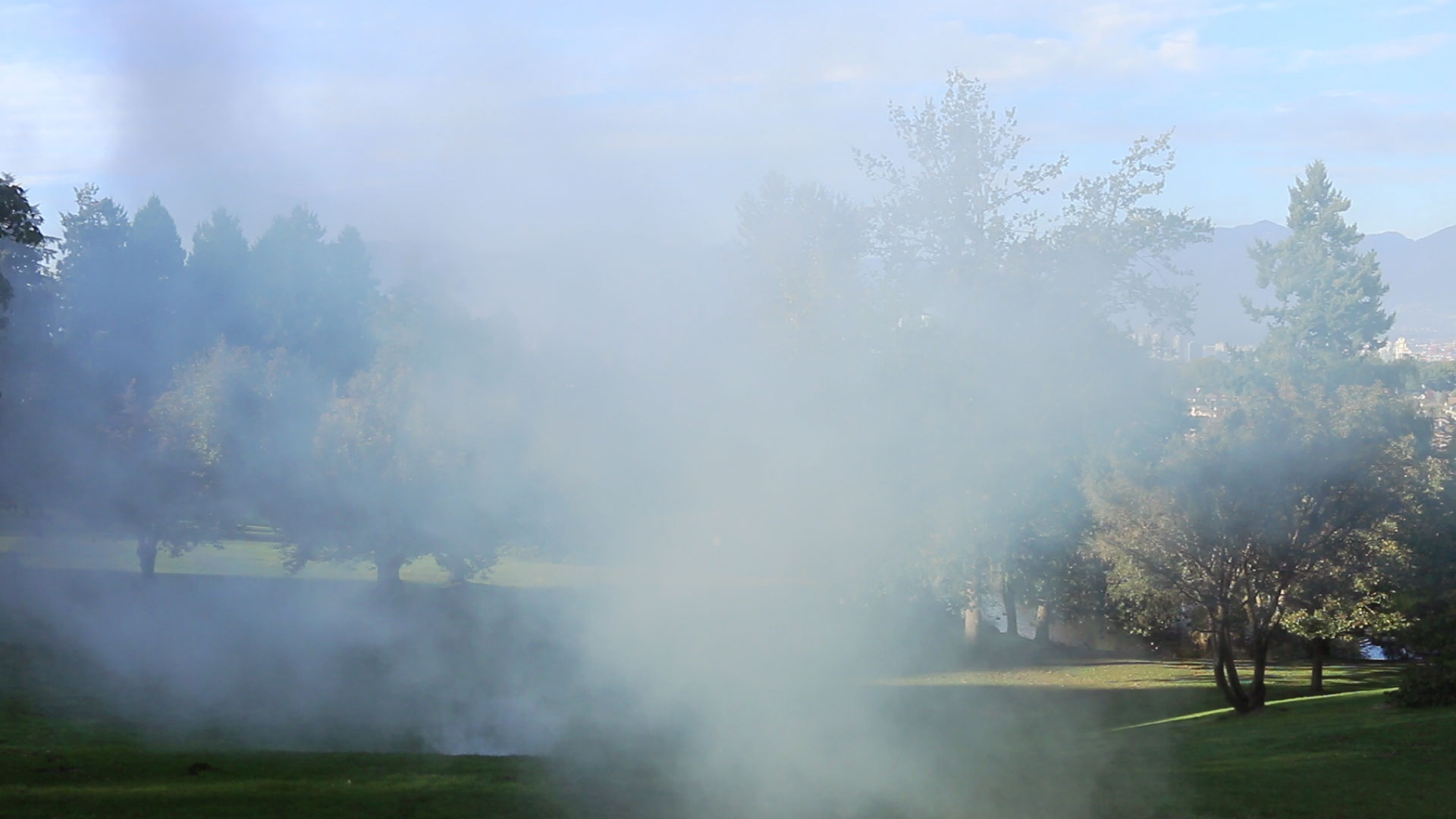

The Air Tasting Mask is designed to aid in the process of separating and reintegrating the senses during the sensory analysis of atmospheric phenomena.